Viral Infections in the Mouth (Symptoms with Pictures)
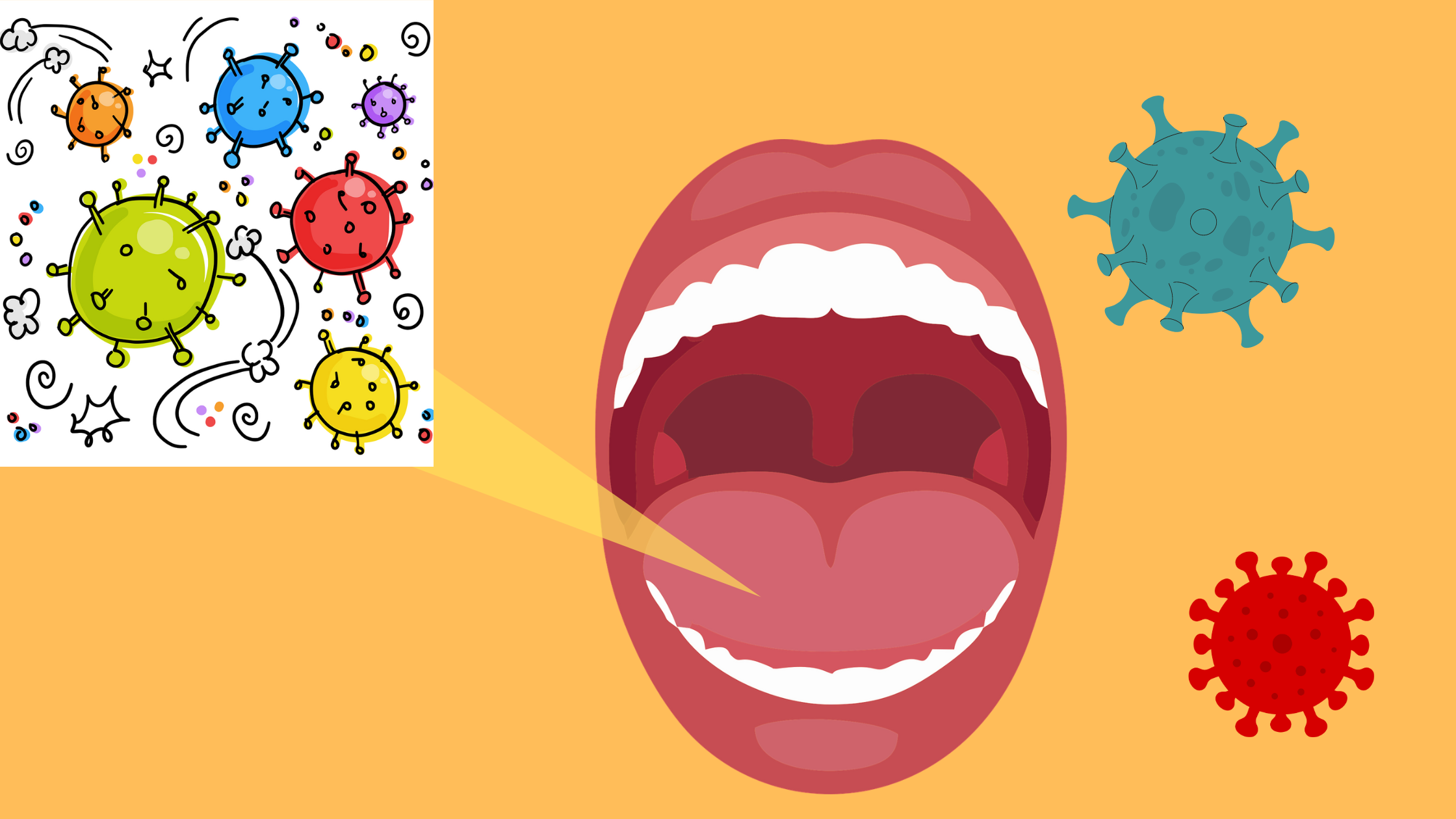 Your mouth is not just a gateway to your words and tastes; it can also serve as a battleground for various viruses.
Your mouth is not just a gateway to your words and tastes; it can also serve as a battleground for various viruses.
Many human viruses have the ability to manifest symptoms right within your mouth. These infections can present in diverse ways, depending on the virus involved.
For instance, herpes viruses are known to eat away at the delicate inner skin of your mouth, leaving painful ulcerations. On the other hand, papillomaviruses can provoke the emergence of unsightly growths known as warts.
In this article, we will delve into the different types of viral infections that can occur in your mouth and their symptoms.
In this article:
1. Herpes virus infection: Cold sores
2. Varicella-Zoster Virus Infections:
3. Human Papillomavirus Infection (HPV):
4. Coxsackie viral infection (Hand, foot, and mouth disease):
5. HIV (human immunodeficiency virus):
1. Herpes virus infection: Cold sores
Herpes virus infection, also known as cold sores, is very common worldwide.Approximately 3.7 billion people under 50 (67% of the world's population) have HSV type 1, the most involved in oral herpes.
In most cases, it is dormant and causes no symptoms. You may not even realize that you're carrying the virus.
However, it can occasionally wake up due to triggers such as injury, stress, illness, hormonal changes, or sun exposure, and cause cold sores. Cold sores are small, fluid-filled blisters that typically appear on or around the lips.
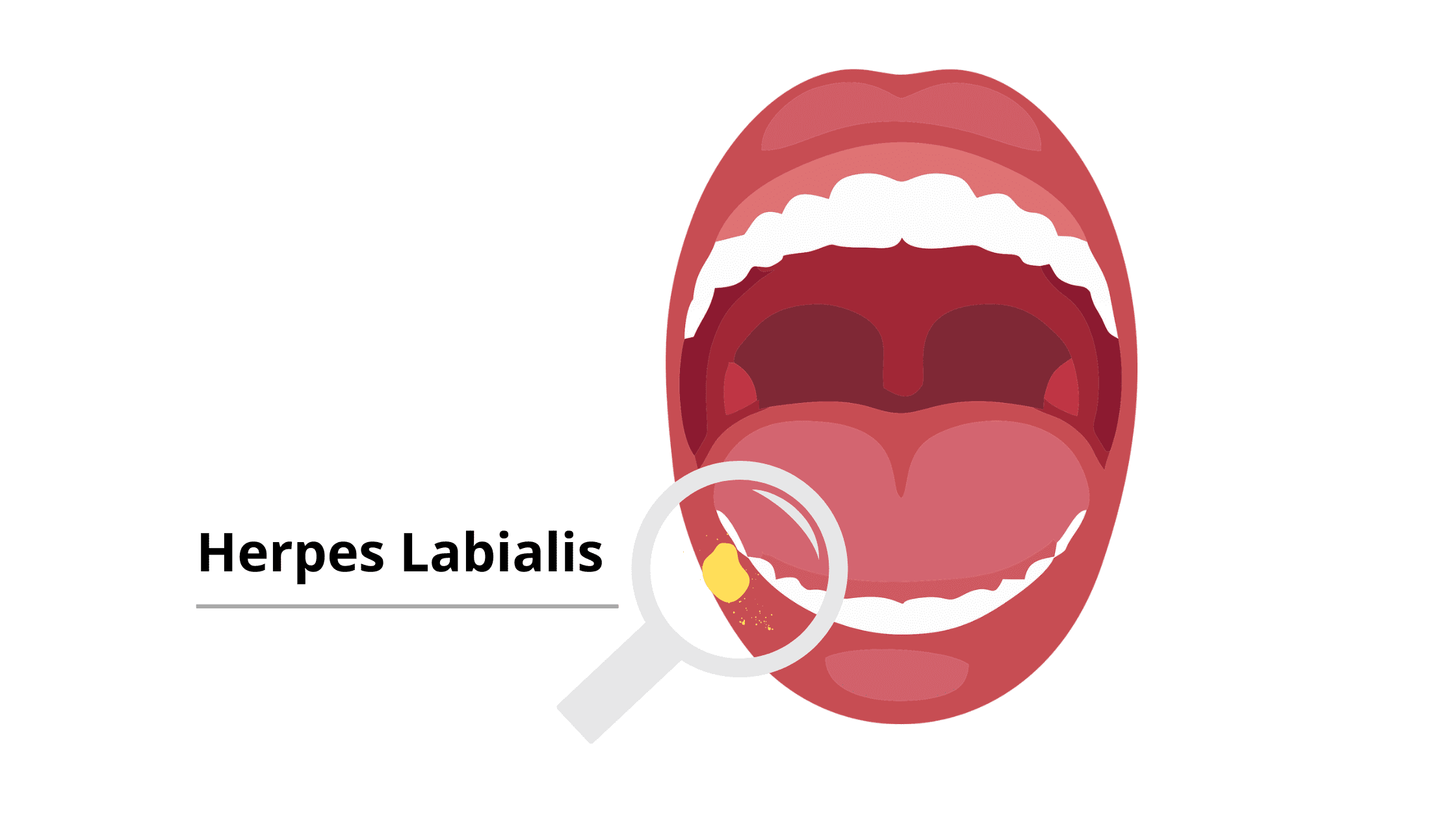
Cold sores are highly contagious and can be transmitted through direct contact with the fluid from the blisters or with the affected area.
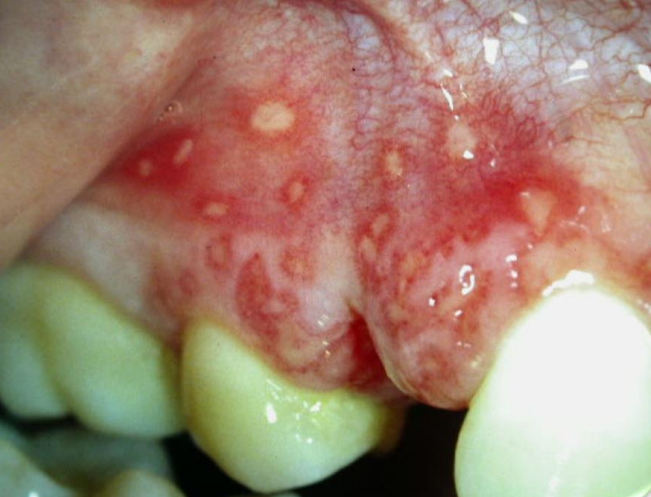
Mouth Symptoms of Herpes Infection
Mouth symptoms of herpes infection, particularly cold sores, include:
- Small, fluid-filled blisters that appear on or around the lips, nose, chin, or cheeks.
- Pain or discomfort in the affected area.
- Itching, tingling, or a burning sensation before the cold sores develop.
- Blisters may break open, forming shallow ulcers or sores.
- Cold sores can be uncomfortable and may take about 1 to 2 weeks to heal completely.
2. Varicella-Zoster Virus Infections:
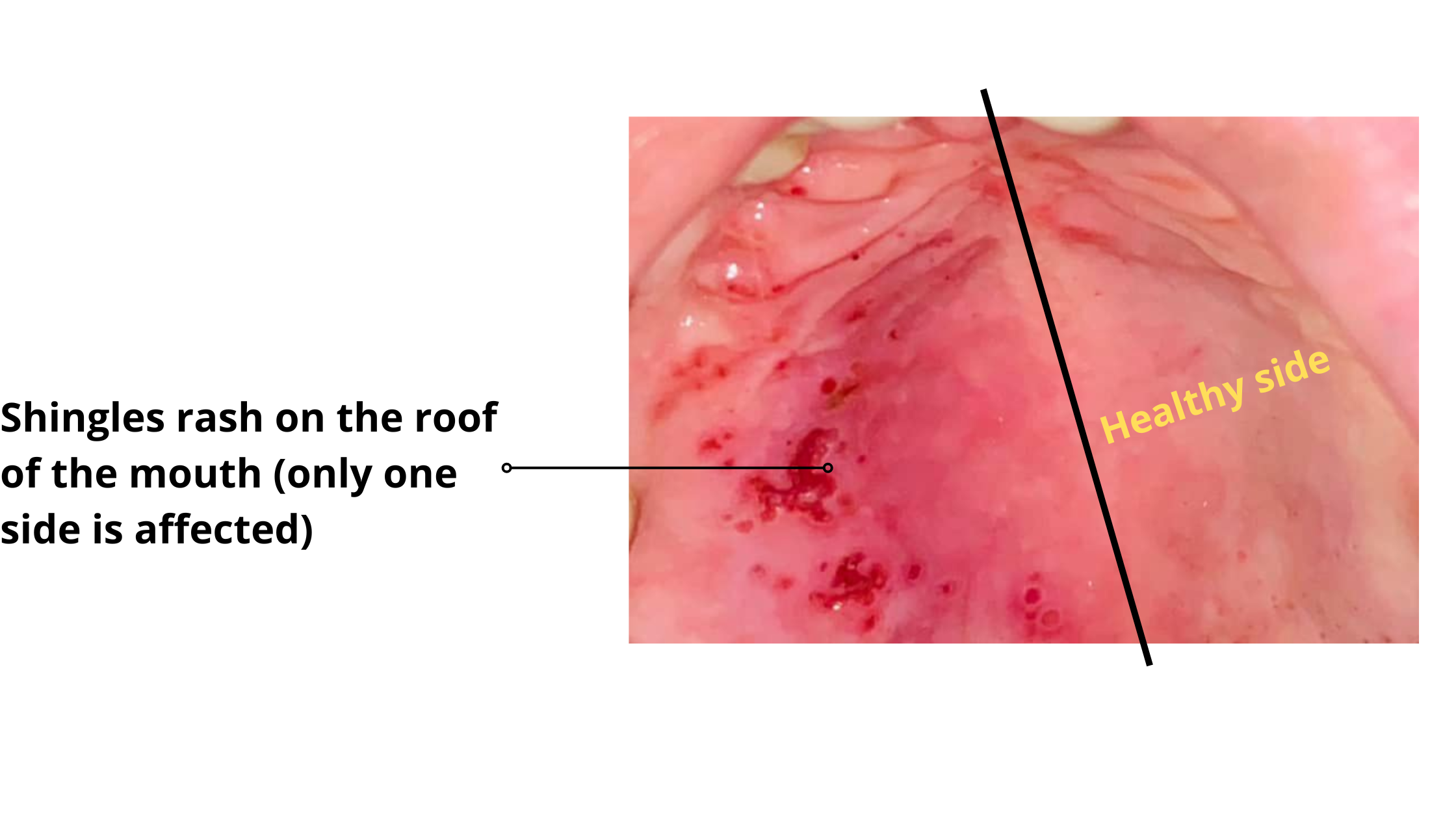
Varicella-zoster virus (VZV) infections are also common. Over 95% of individuals carry the dormant form of VZV.
The infection encompasses two different conditions caused by the same virus: varicella (first phase) and herpes zoster (when the virus reactivates later).
Varicella or chickenpox is the initial infection that occurs when a person contracts the VZV for the first time, typically during childhood. It leads to itchy, fluid-filled blisters that cover the entire body. It is primarily transmitted through respiratory droplets from an infected person or direct contact with the fluid from their blisters.
After this phase, the virus enters a dormant state in the body's nerves.
On the other hand, herpes zoster or shingles is a painful rash that typically occurs later in life due to the reactivation of dormant VZV. This can be due to factors like stress, trauma, malnutrition, etc. The first telling signs are often headaches, fever, and malaise. In the United States, around 1 in 3 people will develop herpes zoster in their lifetime.
The distinctive feature of shingles is that the rash appears on one side of the face/mouth, while the other half remains intact.
Mouth symptoms of VZV
Mouth symptoms of varicella-zoster virus infections (chickenpox and shingles) are generally similar. These may include:
- Small, itchy blisters or sores on the inside of the mouth and throat.
- Pain or discomfort while eating or drinking, especially if the blisters are present on the tongue, gums, or inside the cheeks.
- Swelling or redness in the mouth.
- Burning sensation in the face.
3. Human Papillomavirus Infection (HPV):
Human papillomavirus (HPV) infection is a viral infection caused by the human papillomavirus. HPV is a common virus that can infect both men and women. It is transmitted mainly through sexual contact.There are numerous types of HPV. Usually, they trigger reactions in specific body areas, such as the skin and inside the mouth, resulting in growths or warts.
Some types of HPV are more serious and can induce cancer, particularly of the mouth, throat, and genital tract.
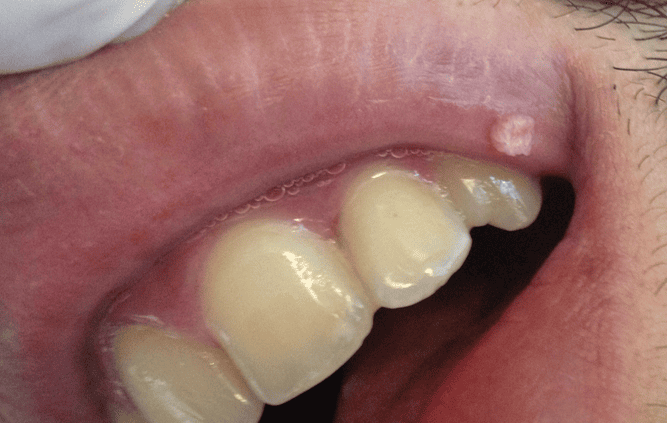
Mouth Symptoms of HPV Infection:
The best-known symptoms of HPV infection are in the mouth. These may include:
- Oral warts: HPV infection can lead to the development of small, painless warts in any area of the mouth. They are also known as condyloma or papilloma.
- Sore throat: Persistent or recurring sore throat that does not have an obvious cause may be a symptom of HPV infection.
- Hoarseness or voice changes: HPV-related changes in the vocal cords can result in hoarseness or voice alterations.
4. Coxsackie viral infection (Hand, foot, and mouth disease):
Coxsackie viral infection, commonly known as hand, foot, and mouth disease (HFMD), is a contagious viral illness caused by the Coxsackie virus. It predominantly affects infants and children but can also occur in adults.HFMD is primarily transmitted through close personal contact with an infected person. The virus can spread through respiratory droplets from coughing or sneezing, contact with blister fluid or saliva, or contact with contaminated surfaces or objects.
HFMD is named after its characteristic symptoms of rash or sores on the hands, feet, and mouth.
Mouth Symptoms of Hand, Foot, and Mouth Disease:
Symptoms occur on the palms, feet and mouth. They are generally preceded by fever, fatigue, and difficulty swallowing. The oral signs to be aware of are:
- Painful mouth sores: Small red spots or ulcers can develop on the inside of the mouth, including the tongue, gums, and inner cheeks. These sores may be tender and make eating and drinking uncomfortable.
- Blister-like lesions: Often, fluid-filled blisters appear on the gums, tongue, or inside the cheeks. These blisters can be painful but typically resolve within a few days.
- Sore throat: The throat can become sore and painful, leading to discomfort while swallowing.
5. HIV (human immunodeficiency virus):
HIV, short for human immunodeficiency virus, is a virus that attacks your body's immune system. Specifically, it targets a type of immune cells known as CD4 cells or T-helper cells, which are essential for fighting off infections and diseases. When HIV weakens your immune system, it makes you more vulnerable to various illnesses and infections.If left untreated, HIV can progress to a more advanced stage known as AIDS (acquired immunodeficiency syndrome).
Among the body parts to show the first signs are the face and mouth. In fact, 50% of HIV-infected patients and up to 80% of patients in the AIDS stage have oral manifestations of the virus.
HIV Transmission:
HIV is transmitted mainly through unprotected sexual relations.
However, the virus does not spread through skin contact. To contract the virus, the body fluids (such as blood, semen, and vaginal secretions) you come into contact with must contain a high viral load. Plus, they have to enter your bloodstream through a wound or mucus membranes (such as the inner lining of your mouth).
Casual contact or skin exposure alone does not put you at risk of HIV transmission.
Mouth symptoms of HIV
The trouble with HIV is that it weakens immunity. As a result, it promotes the growth of other bacteria and viruses, leading to other infections and conditions (including cancer). Here are some signs to be aware of:
- Thrush: This is a fungal infection caused by a yeast called Candida. Thrush appears as white patches on the tongue, inner cheeks, or the roof of the mouth.
- Oral hairy leukoplakia: This condition presents as white, raised, and hairy-looking patches on the side of the tongue.
- Painful mouth sores: People with HIV infection often show painful ulcerations or sores in the mouth.
- Gum disease: HIV can increase the risk of gum disease, leading to inflammation, bleeding gums, and eventually, tooth loss if not properly managed.
- Dry mouth: Dry mouth, also known as xerostomia, is a common oral manifestation in individuals with HIV. It occurs when the salivary glands do not produce enough saliva, leading to a dry and uncomfortable sensation in the mouth.
- Cavities: HIV infection can increase the risk of developing cavities. This is primarily due to a combination of factors, including a weakened immune system, reduced saliva production, and changes in oral hygiene habits.
How long before HIV shows symptoms?
When you first contract the virus, the signs don't appear immediately. Initial symptoms may take several weeks to appear, resembling those of the flu. After this phase, HIV may not cause any symptoms for years, multiplying silently within the body.
While viral infections of the mouth can be annoying, most are not very serious and usually disappear over time, as the body fights them off.
However, it's essential not to confuse benign oral lesions caused by certain viruses with other conditions that may require treatment. Thus, it is necessary to consult a dentist or health professional for an accurate diagnosis and appropriate treatment.
However, it's essential not to confuse benign oral lesions caused by certain viruses with other conditions that may require treatment. Thus, it is necessary to consult a dentist or health professional for an accurate diagnosis and appropriate treatment.
Sources
- Pathogenesis and disease - Human Herpesviruses - NCBI Bookshelf (nih.gov)
- HIV Transmission | HIV Basics | HIV/AIDS | CDC
- Oral Manifestations Associated with HIV/AIDS Patients - PMC (nih.gov)
- Herpes simplex virus (who.int)
- Oral manifestations of human papillomavirus infections - PubMed (nih.gov)
- Herpes zoster epidemiology, management, and disease and economic burden in Europe: a multidisciplinary perspective - PMC (nih.gov)
- Essentials of Oral Pathology by Swapan Kumar Purkait (Author)
- Oral Medicine (A Colour Handbook) by Michael A.O. Lewis (Author), Richard C.K. Jordan (Author)
- Shingles (Herpes Zoster) https://www.cdc.gov/shingles
